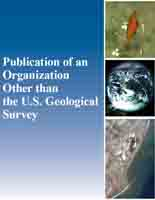Klamath-Siskiyou herpetofauna: Biogeographic patterns and conservation strategies
Links
- More information: Publisher Index Page
- Download citation as: RIS | Dublin Core
Abstract
The Klamath-Siskiyou region of southwest Oregon and northwest California (USA) has some of the most complex landscape mosaics and plant communities in western North America, reflecting its marked diversity of precipitation and topography. With 38 native species of amphibians and reptiles, the Klamath-Siskiyou region has the most species-rich herpetofauna of any similarly sized mountain range in the Pacific Northwest. Although it is a biodiversity 'hot spot,' there are only two endemic species, both salamanders, in the Klamath-Siskiyou region. High diversity is due to the overlap of two major biogeographic groups: the Arcto- (= northern) and Madro- (= southern) Tertiary herpetofaunas. Many of the amphibians in the Klamath-Siskiyou region are restricted to specialized habitats. Much of our knowledge about the biology of the regional fauna is based on studies elsewhere. Distributional surveys and ecological research are needed to address how the herpetofauna responds to timber harvest and other human activities that may reduce populations and increase fragmentation of suitable habitats. Conservation of the region's diverse herpetofauna should emphasize strategies directed at habitat specialists and species at the latitudinal limits of their ranges.
Study Area
| Publication type | Article |
|---|---|
| Publication Subtype | Journal Article |
| Title | Klamath-Siskiyou herpetofauna: Biogeographic patterns and conservation strategies |
| Series title | Natural Areas Journal |
| Volume | 19 |
| Issue | 4 |
| Year Published | 1999 |
| Language | English |
| Publisher | Natural Areas Association |
| Contributing office(s) | Forest and Rangeland Ecosystem Science Center |
| Description | 10 p. |
| First page | 341 |
| Last page | 350 |
| Country | United States |
| State | California, Oregon |
| Other Geospatial | Klamath-Siskiyou region |


